How Much to Feed Emaciated Cat
With so many choices on the market, choosing the best food for your feline friend isn't simple. With hundreds of wet foods, dry foods, and canned foods to choose from, pet parents are bound to struggle with making a decision. If you have decided to feed your cat exclusively on wet cat food, it is crucial to know exactly how much wet food to feed a cat .
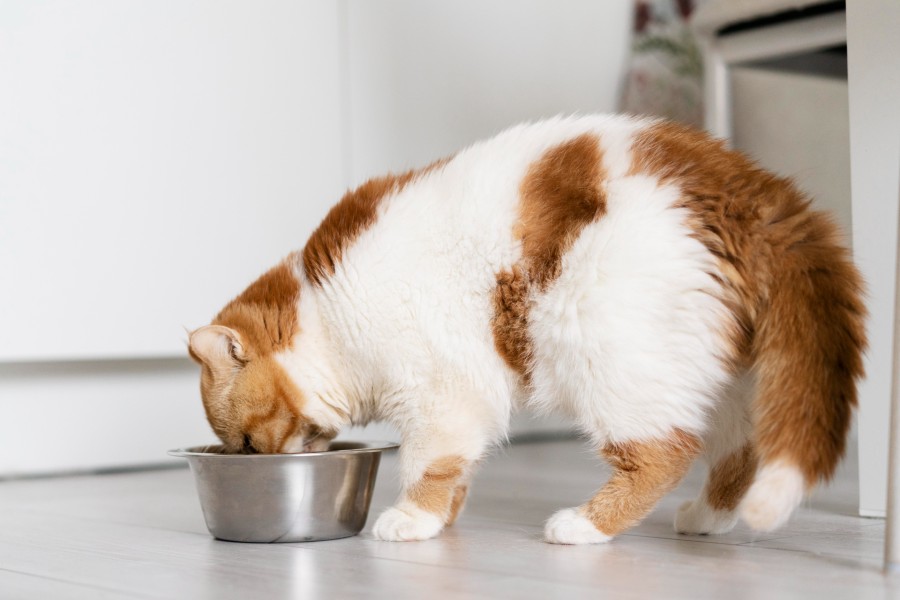
Why Should My Cat Eat Wet Food?
Pet owners may find that cats generally prefer wet food over others. This is because wet foods are typically delicious and pleasing to the smell.
Here are the pros and cons of wet cat food:
Benefits
- High moisture content: Most cats are not natural drinkers and are prone to dehydration and urinary tract infections. Feeding cats exclusively on dry food can mean that they don't consume enough water. Wet cat food tends to have a moisture content of 75-78% moisture, helping to keep your kitty hydrated.
- Fewer calories: Wet foods tend to have fewer calories than dry foods. A typical kibble of dry food contains around 3/4 kcal/g. For comparison, wet cat food contains around 0.8/1.5 kcal/g.
Drawbacks
- More expensive: Wet cat food is often more expensive than dry cat food, making it a less appealing option for those on a tight budget.
- Spoils quickly: Leaving wet food out for more than 4 hours can lead to food spoiling, whereas dry food can be left out for up to 48 hours.
Many cat owners choose to feed their cat a combination of dry food and cat food, as this means that their cat can enjoy the benefits of both worlds.
Is It Okay if I Feed My Cat Exclusively Wet Food?
It is possible to feed your cat exclusively on wet food, although this option can be expensive. Suppose your cat is not inclined to drink a lot of water or suffers from diabetes, urinary tract infections, or kidney disease. In that case, wet or canned food may be a better option than dry food due to the former having more moisture content.
Wet food also comes in many different textures, such as mousse, loaf, chunks in gravy or jelly. You can try feeding wet food to cats that don't like kibble, as wet food tends to be more palatable.
Avoid feeding your cat your food, as some of the foods we eat can be dangerous to your cat's health.
Does My Cat's Lifestyle Affect How Much I Should Feed My Cat?
When deciding how much food to feed your cat, examine their lifestyle and current health. Here are a few things to take into consideration:
- Feline obesity: A cat eating a bad pet diet can cause a cat to become obese. Feline obesity is common in adult cats. Cats are considered obese if they're 10/20% over their ideal body weight. To determine if you have an overweight cat, feel along with your cat's back. If you can't feel their bones, your cat's weight is higher than the ideal mass. A veterinarian can provide you with an estimate for your cat's ideal body weight — which can also help you plan with your cat's feeding regimen.
- Too thin: A thin cat will have a rib cage that is prominent under their fur and skin; their spine will also feel knobbly. To help your cat reach an ideal weight, ensure that you're feeding it with high-quality foods.
- Medical issues: When choosing how much wet food to feed a cat, consider any medical issues they may have. Occasionally, medical problems can affect weight gain/loss in pets. If you can't manage your cat's weight well, ask a veterinary professional for advice.
- Indoor or outdoor: An indoor cat's activity level will differ from that of a cat that spends most of its time outdoors. While both have the exact basic nutritional and water requirements, an indoor cat will require fewer calories than an outdoor cat.
- Age: Your cat's life stage is essential and must be considered when determining how much food to feed your cat. Adult or senior cats require fewer calories than kittens, who need the extra energy to support their high energy levels and growth and development.
A combination of an active lifestyle and a healthy diet will ensure your cat's happiness and well-being.
Are the Cat Feeding Recommendations on the Packages Accurate?
It's worth mentioning the significance of your cat's food label. Although these numbers are not entirely accurate for every cat, they could provide you with an estimate on the number of calories your cat needs.
To ensure your cat remains in shape, you will have to keep an eye on their body condition and adjust their calorie intake accordingly.
The Pet Nutrition Alliance has a free calorie calculator for cats, which can aid you in achieving an ideal body weight for your cats. Remember that each cat is unique, and there is no one-size-fits-all approach to the number of calories a cat needs. The best course of action is to speak to your vet for guidance.
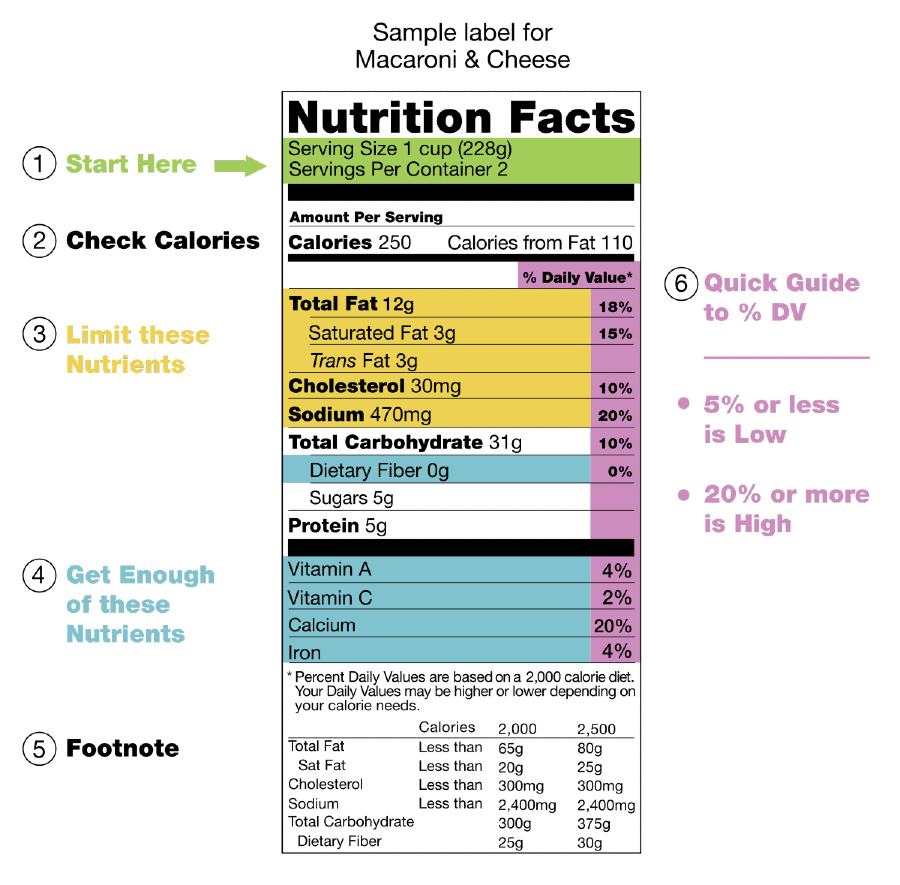
How Much Wet Food Should I Feed My Cat?
As mentioned above, a cat's calorie requirements will differ depending on multiple factors. However, it can be helpful to have a guideline to work off when deciding how much food to feed your cat. Here is a cat feeding chart:
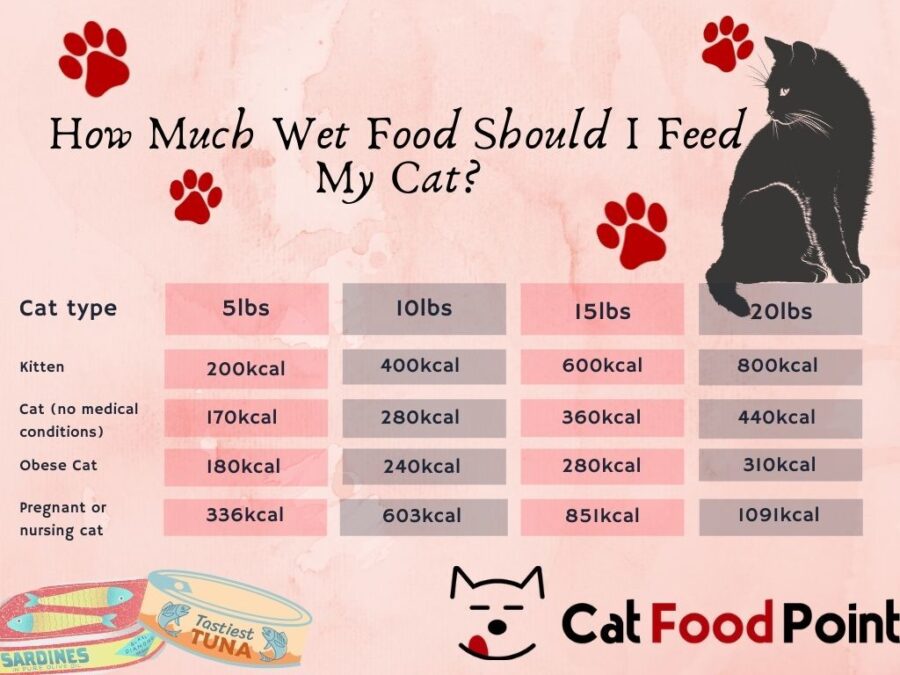
What Should I Consider When Picking a Wet Cat Food To Feed My Cat?
Choose food that meets AAFCO standards
The AAFCO does not endorse, certify or approve cat foods. Instead, they regulate the sale and distribution of animal food.
To ensure you're feeding high-quality food to your cat, look for ones that meet AAFCO standards. Pet food can only claim that it's complete if it meets the minimum requirements set by the AAFCO. Look for the Nutritional Adequacy label on the food package to see if it meets AAFCO standards.
What ingredients should I feed my cat?
Some nutrients are crucial when choosing the right cat food. Feeding your cat low-quality foods may mean some of these essential cat food ingredients are missing in their diet — leading to malnutrition. Make sure your pet's food includes the following:
- Protein: Protein is a vital nutrient for your pet's food since all cats are carnivores. Do not feed a cat an animal product-free diet, as this is not healthy for them. The protein content should account for at least 25% of their diet.
- Taurine: This is an amino acid that is naturally present in meat. Cats can't generate enough Taurine on their own. Therefore, Taurine must be present in their diet. Taurine helps ensure a healthy vision, good digestion, a healthy heart, and a functioning immune system. It is also essential for maintaining normal pregnancy and fetal development.
- Fat: A cat generally needs around 20-24% fat content in its diet. Look for a specific fat source, such as chicken fat, when buying cat food.
- Omega 3s and 6s, vitamins, and minerals: Cats need vitamins, minerals, and omegas to maintain a healthy, well-functioning body. Deficiencies in any of these nutrients can result in health issues.
Assessment of Your Cat's Feeding Habits – Is My Cat Eating Enough?
A cat's behavior, general health, and weight are all indicators of their diet and nutrition. A shiny coat and good dental health are additional indications of a balanced diet. Keep track of any changes in these factors as they could indicate whether your cat requires fewer or more calories or has developed any underlying health issue.
Note: For many cats, new environmental stress may also affect your cat's weight. If you bring home a cat from a rescue center or adopt it from someone else, it may take a few days before it can adjust to its new home. You may find it hard to approach and feed the cat, so you must be patient with it.
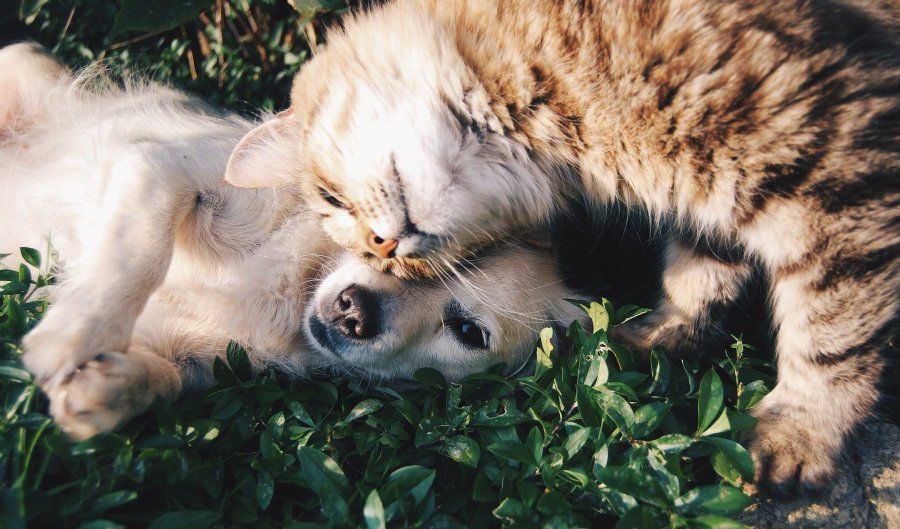
Final words
When deciding how much wet food to feed a cat , your goal should always be to ensure that your cat maintains a healthy weight. To find out the recommended weight for your cat, consult a professional at an animal medical center. Should you see any drastic changes in your cat's weight, consult your vet.
See also:
- How Much Dry Food Should I Feed My Cat Per Day?
- Best Cat Food
- How Long Can Cats Go Without Food?
- Best Cat Food for Weight Loss
Source: https://www.catfoodpoint.com/how-much-wet-food-to-feed-a-cat/
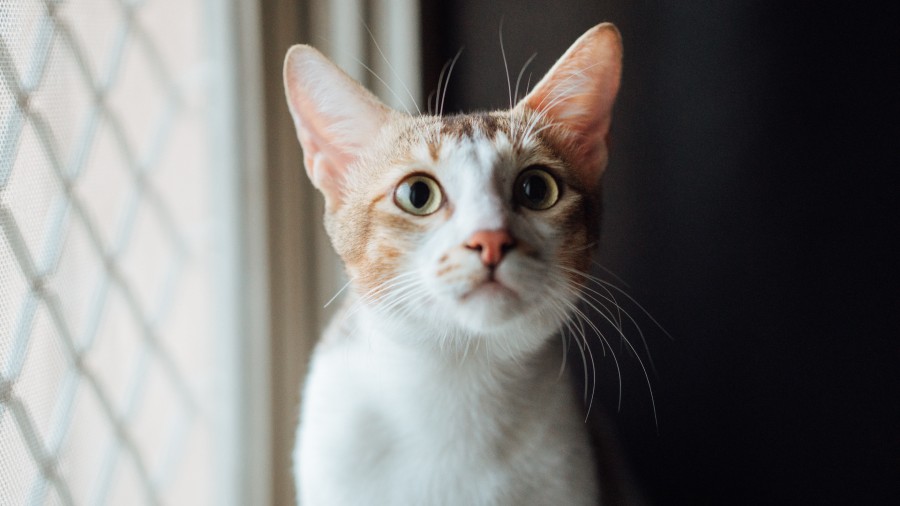
0 Response to "How Much to Feed Emaciated Cat"
Post a Comment